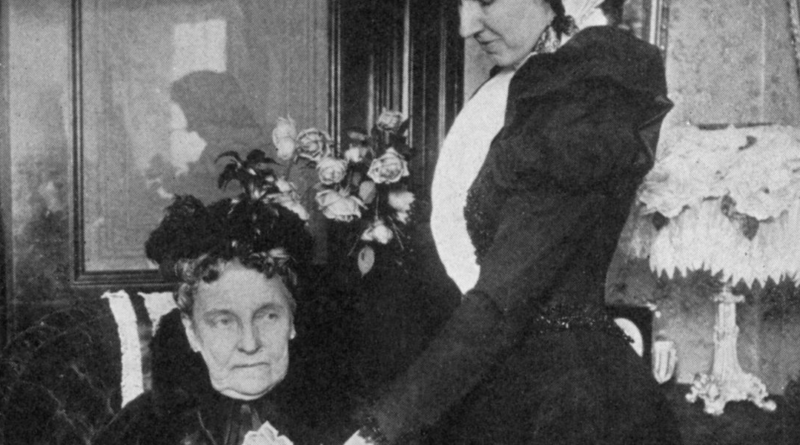Meet the ‘Witch of Wall Street,’ a pioneering value investor dressed in all black who became the world’s richest woman—but is wrongly remembered as a cheapskate
Hetty Green isn’t a name you hear a lot these days—but it should be. The whaling heiress turned investing guru was making millions and dishing out sage advice on Wall Street decades before the man known as the greatest investor of our era, Warren Buffett, was even born. And when Benjamin Graham, Buffett’s hero and the man they call “the Father of value investing,” was in grade school, Green had already made millions buying Civil War bonds, railroad stocks, and mines. She made a killing in mortgage lending, too—never charging excessive interest, but likewise unafraid to foreclose if she wasn’t receiving payments.
Always a saver with extra cash on hand, Green lent freely to American businessmen, investors, and even the city of New York during times of need. And through it all, she preached many of the common sense, so-called “value” investing tips that Graham spent his career detailing—the same ones you often hear Buffett espouse today. But the Massachusetts native-turned-New Yorker was a working mother, and her fierce disposition and unwillingness to comport with what was believed to be a woman’s place led to her estrangement from a society where she had few contemporaries.
There’s even a story about how Green pulled a gun on her rival, the railroad magnate Collis Potter Huntington, after he threatened her son Ned over a railroad dispute in Texas. “Up to now Huntington, you have dealt with Hetty Green the business woman. Now you are fighting Hetty Green the mother,” she reportedly said. “Harm one hair of Ned’s head, and I’ll put a bullet through your heart.”
Green made a fortune (and a few enemies) by sticking to disciplined investing principles that have become common today. However, she is mostly remembered for penny pinching and her choice to repeatedly wear the same black dress and veil later in life, something that led her to garner unfavorable nicknames like “the world’s greatest miser” and “the Witch of Wall Street.”
But Hetty Green’s true story is far more complex, and her nature much more generous, than the media of the late 1800s and early 1900s portrayed. If she were around today, she would be easily compared to Buffett and other great investors of our era.
Long before women were even given the right to vote, Green was a titan in a male-dominated field, earning the respect of the likes of John Pierpont Morgan, the American financier who founded what is now JPMorgan Chase. It’s no wonder why, really. Although she was known for her frugal nature, when the chips were down on Wall Street, investors turned to Hetty Green—and not just for money to save their businesses, but also for advice. To say that was rare during the Gilded age of the late 1800s is understating it.
When Green died in July 1916, as the New York Times put it in her obituary, she was “generally believed to be the world’s richest woman,” having amassed a fortune of $200 million, or nearly $6 billion today. From helping to save New York City during the 1907 panic to pulling a gun on a man who had threatened her son, Hetty Green was a complex character whose legacy has, in many ways, been tainted by biased coverage that focused on her miserliness.
The real “Witch of Wall Street,” while undeniably cheap, wasn’t a witch at all, more like an independent investing genius. As Charles Slack, who wrote a book on Green titled Hetty: The Genius and Madness of America’s First Female Tycoon, put it in an interview with Fortune: “She had the courage to live as she chose.”
Green only followed conventions that “seemed to her right and useful, coldly and calmly ignoring all the others,” he added.
This is the tale of the misunderstood “Witch of Wall Street,” whose tips for making money and thriving in our complex world are as relevant today as they were over 100 years ago.
Understanding the ‘Witch of Wall Street’
Henrietta (Hetty) Howland Robinson Green was born in 1834 in New Bedford, Massachusetts. The daughter of a conservative Quaker family that owned the largest whaling fleet in the city, Green learned about finance and trade from a young age, becoming the family’s bookkeeper by age 13.
After attending a strict boarding school, Hetty went on to help her father with their businesses in New York City when he sold his whaling enterprise. There she met and married Edward Henry Green, a partner in a trading business. The two would go on to have two children, Edward and Harriet.
When Green’s father died in 1865, she inherited around $5.9 million, or roughly $95 million today. The issue was $5 million of that money was locked in a trust that only gave her rights to its income. Even so, Green began buying stocks with what she had, conducting detailed research on companies to find those with the best “value” within the market. She always looked for “underpriced stocks” and “was far less concerned with which way the market was heading,” according to Slack, her biographer.
Green’s investing strategies paralleled those that Graham described in his 1949 book, Intelligent Investor, which has become a bible to many in the “value investing” community. Doing your homework, looking for quality companies, avoiding overvalued momentum stocks, these were all Hetty Green principles that Graham only detailed decades later.
Green was ahead of her time in many ways. She always avoided the use of leverage when investing, for example, something that Warren Buffett has recommended throughout his career. Graham failed to avoid it in the 1920s, leading to some dismal years for his fund during the Great Depression.
Despite Green’s modern investing strategies that are still relevant today, it is her thorny personality traits that have caught history’s attention more than anything.
The investing legend was certainly frugal and not known for her kind nature. Newspapers made claims about her living in broken-down apartments; wearing cheap dresses until they ripped at the seams; and avoiding using hot water to save money—all while she was a millionaire many times over. “One of the persistent stories is that her son Ned had to have his leg cut off because she was too cheap to get it treated,” Slack noted.
But the biographer explained that this story really isn’t true. Green did what she could to have her son’s leg treated, despite her distrust for doctors—she hated politicians, lawyers, and journalists, too. “She loved her son, and she tried a number of remedies over the years,” Slack said. “It wasn’t this sort of stark tale of cruelty we hear.”
The reality is, Green was often crass, cheap, and hard-headed, but despite all the stories about her cruel-hearted nature, she was also a brilliant investor, cunning businesswoman, and (mostly) loving mother who was decades ahead of her time.
So why is she remembered only as the world’s greatest miser?
“I think men of that era, who are very successful in business, tend to get viewed first by their business genius, and later by their personal eccentricities. And I think for Hetty, because she was a woman, she tended to get viewed by her personal characteristics first of all, and her financial genius was an afterthought,” Slack said.
Hetty herself argued that she was a victim of bad press. “I am not a hard woman, but because I do not have a secretary to announce every kind act I perform, I am called close and mean and stingy,” she once told reporters, adding that: “I am a Quaker, and I am trying to live up to the tenets of the faith. That is why I dress plainly and live quietly. No other kind of life would please me.”




